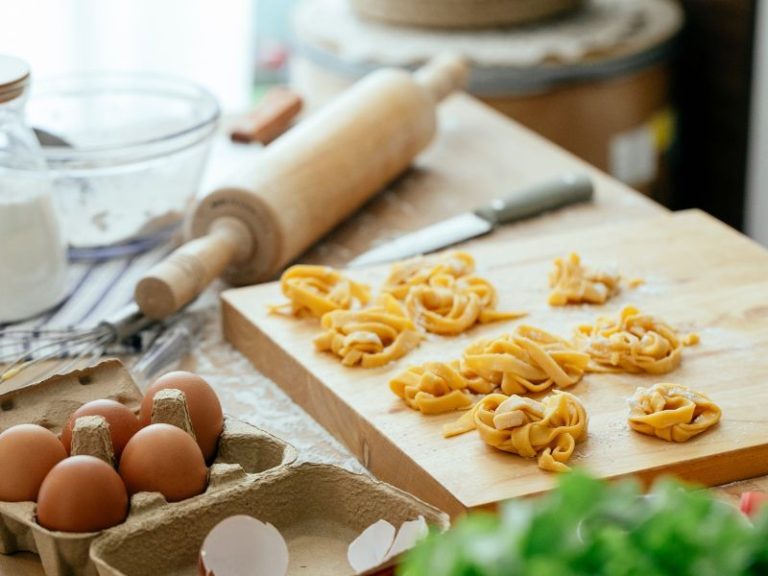Something that is homemade was made or produced at home as opposed to being bought from a store or another commercial establishment. The phrase can be used to refer to a wide variety of products, such as food, crafts, clothing, and other things that are made by hand using raw materials or other supplies.
Since the early 19th century, the term “homemade” has been used in the English language. People frequently made many of the items they needed at home back then rather than purchasing them from a store. As commercial products were frequently expensive or scarce, this was frequently a result of necessity for the economy. As a result, the concept of “homemade” became synonymous with frugality and independence.
The idea of handmade has developed over time and is today viewed as a means of expressing creativity, expertise, and a sense of self-accomplishment. Making things at home is a popular activity for many people, and there are many resources accessible to those who wish to learn how to do it. Additionally, as individuals look for more natural and eco-friendly alternatives to commercial products, the movement towards more sustainable and environmentally-friendly living has increased the popularity of homemade goods.
Since the topic of homemade goods is broad and can include a variety of activities and interests, there are numerous categories that could be considered popular within it.
The following are some popular categories for handcrafted goods:
- Food and drink: homemade meals fall under this category, which also includes baked products, coffee, and tea. For example, the lacto-fermentation of food.
- Crafts and hobbies: Items done by hand for amusement or as a means of artistic expression fall under this category. Examples include knitting, painting, and woodworking.
- Personal care and cosmetics: This area contains homemade cosmetics like soap, shampoo, and skincare items.
- Home and garden products fall under this category, which also includes furniture, accent pieces, and gardening tools.
- Clothing & accessories: This category consists of items manufactured by hand, such as jewelry, hats, and scarves.
- Gifts: Products made by hand specifically to be given as gifts, such as greeting cards, ceramics, or other handcrafted items, fall under this category.
- Science and technology-related DIY products, such as electrical gadgets or scientific experiments, fall under this category.
- Educational materials: such as teaching aids or instructional games, fall under this category.
These are but a handful of the several categories that could be thought of as popular for the subject of homemade goods.

Making things at home has several advantages, including:
- Customization is possible when something is made at home to suit your particular requirements or tastes. This is particularly helpful for products like apparel or home décor that might not be offered in the precise design or color you desire.
- Cost Savings: Making goods from scratch is frequently less expensive than buying them from a store. This may be especially true for products created from readily available, affordable materials or those that have been recycled from previous products.
- Individual fulfillment: Making something with your own hands can be a joyful and fulfilling experience. You may feel proud of your efforts and a sense of accomplishment as a result.
- Environmental advantages: Making things at home can cut down on the resources used in the manufacture and delivery of commercial goods. Additionally, as homemade goods frequently use materials that would be thrown away, it can help reduce waste.
- Benefits for your health: Making food and personal care products at home generally involves using natural components that are healthy for you. People who are allergic to or sensitive to particular chemicals or compounds that are frequently found in commercial products may find this to be of particular importance.
- Learning opportunities: Making homemade goods can be a terrific method to pick up new knowledge and abilities. It can also be fun, especially for people who are curious about cooking, crafting, or other practical pursuits.
- You have complete control over the quality of the materials used and the manufacturing process when you produce anything at home. For things that are often used or intended for long-term usage, this can be extremely crucial.
Making things from scratch can be fun and satisfying overall. You can use your imagination, generate financial savings, and create goods that are catered to your unique requirements and tastes. It can also give you a sense of success and pride in your work, as well as be a terrific opportunity to learn new skills and methods. There are endless opportunities to explore your interests and learn the joys of making things by hand, whether you are interested in cooking, crafting, or any other form of creative activity. Therefore, the benefits of making things at home are limitless and can significantly improve our daily happiness and contentment.
© 2016-2022 by Homemade.us. All rights reserved. No part of this document may be reproduced or transmitted in any form or by any means, electronic, mechanical, photocopying, recording, or otherwise, without prior written permission of Homemade.us.

Leave a Reply